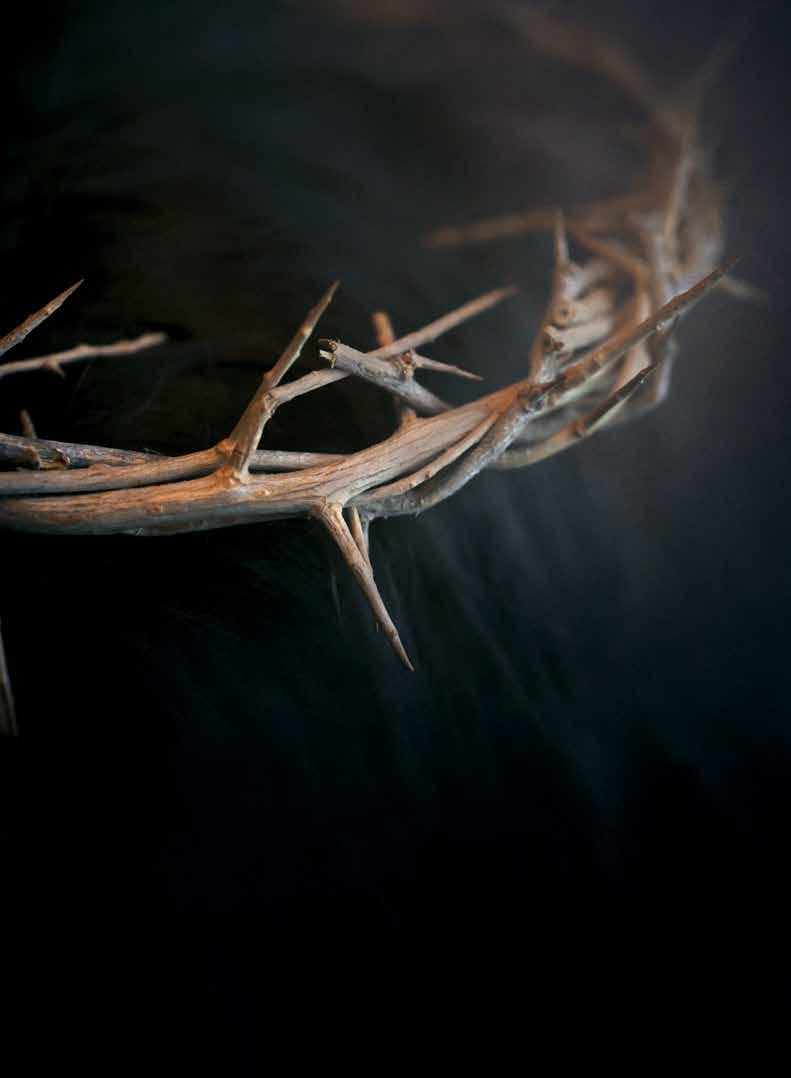EXPLORING GOD’S WORD
Good Friday–Easter Sunday:
It Just Doesn’t Add Up! Jesus Christ said He would be entombed for three days and three nights. Can this be reconciled with a “Good Friday” crucifixion and burial and an “Easter Sunday” resurrection? Or do the Gospels spell out a surprising, simpler solution that fits perfectly with what Jesus foretold? by Scott Ashley
I
n Matthew 12:38, we read where some of the Jewish religious leaders asked Jesus for a sign to prove He was the Messiah. “Teacher, we want to see a miraculous sign from you,” they challenged Him (New International Version). But Jesus responded that the only sign He would give was that of the prophet Jonah: “For as Jonah was three days and three nights in the belly of a huge fish, so the Son of Man will be three days and three nights in the heart of the earth” (verse 40, NIV). Traditional view doesn’t fit But how can we fit “three days and three nights” between a Friday crucifixion, with entombment just before sundown, and a Sunday morning resurrection at sunrise? This traditional view allows for Jesus to have been in the tomb for only one 24-hour day and parts of two others! Some believe that Christ’s statement that He would be “three days and three nights in the heart of the earth” does not require a literal span of three 24-hour days (72 hours total) or even close to that. They reason that any part of a day, even just a few minutes, can be reckoned as a whole day. Thus, since Jesus died in the afternoon and was entombed just before sunset, they think that the closing few minutes of Friday constituted the first day, that Friday night was the first night, that Saturday was the second day, that Saturday night was the second night, and that a few minutes at dawn on Sunday morning made up the third day. But where, then, is the third night? Even if a few minutes of daylight late on Friday and another few on Sunday morning constitute “days,” this interpretation fails to explain how only two nights—Friday night and Saturday night—can somehow be the three nights of which Jesus spoke. Moreover, Scripture is plain that Jesus had already risen before Mary Magdalene came to the tomb early Sunday morning, arriving “while it was still dark” (John 20:1-2). So in reality, no parts of daytime on Sunday could be counted as a day, as Jesus was already resurrected well before the
10 Beyond Today
•
B Tm a g a z i n e . o r g
break of dawn. Clearly it just doesn’t add up! Jonah 1:17, to which Jesus referred, states specifically that “Jonah was in the belly of the fish three days and three nights.” We have no biblical basis for thinking that Jesus meant only two nights and one day, plus part of another day. If Jesus were in the tomb only from late Friday afternoon to early Sunday morning, then the sign He gave that He was the prophesied Messiah was not fulfilled. So was Jesus Christ wrong? Or is something wrong with the traditional view of when and how long He was in the tomb? Let’s carefully examine the details from the Gospels. When we do, we uncover the real story of how Jesus’ words were fulfilled exactly as He said! Two Sabbaths mentioned Notice the sequence of events outlined in Luke 23. Jesus’ moment of death and hasty burial because of the oncoming Sabbath that would begin at sundown, is narrated in verses 46-53. Verse 54 states of this particular afternoon, “That day was the Preparation, and the Sabbath drew near.” In Jewish society of that time, extra cooking and housecleaning were done on the day before a Sabbath in preparation for it (see Exodus 16:23). Thus the day before the weekly Sabbath was a time of preparation. The biblical Sabbath falls on Saturday, the seventh day of the week. According to Bible reckoning, days begin at sunset (Leviticus 23:32; compare Genesis 1:5, 8, 13), so all weekly Sabbaths start Friday evening at sundown. Based on these facts, many people have assumed that it is the weekly Sabbath mentioned here, and that Jesus was therefore crucified on a Friday. But two types of “Sabbaths” or sacred rest days are mentioned in the Scriptures—the regular weekly Sabbath day, which fell on the seventh day of the week, and seven annual Holy Days (listed in Leviticus 23), which were also Sabbaths that could—and usually did—fall on days of the week other than the regular weekly Sabbath day. Was the day after Jesus was crucified a weekly Sabbath or








